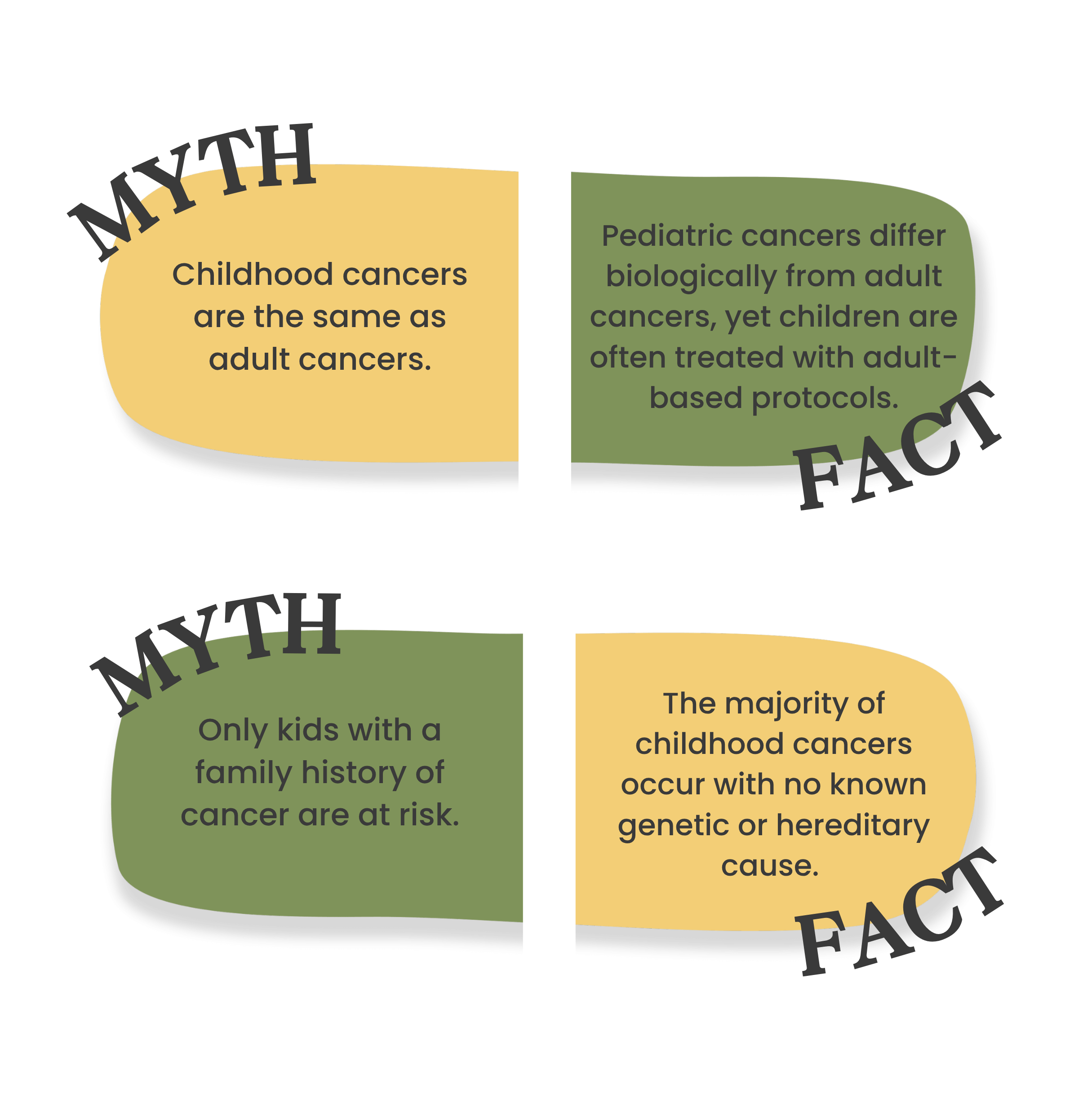
Know the Facts
About Childhood Cancer
Cancer remains the #1 cause of death by disease in children in the United States.
Strides in childhood cancer treatment have come a long way.
Survival rates have improved significantly over the past few decades — today, nearly 85% of children with cancer in the U.S. survive at least 5 years, and many benefit from advancements in clinical trials and precision medicine.
But progress doesn’t mean the problem is solved.
1 in 5 children still won’t survive their diagnosis.
Those with rare or aggressive forms continue to search for effective treatment options. Emerging therapies offer hope in select diagnoses, but entire populations of children remain underprioritized by the research system.
Improved outcomes shouldn’t be mistaken for adequate attention.
Childhood cancer research still receives only a fraction of federal research funding — at just roughly 4% — and far too many families are still being left with limited, outdated, or one-size-fits-all options. This lack of investment slows down the development of new treatments and leaves many cancer types without dedicated research.
Many believe that it’s rare for a child to get diagnosed with cancer — but in the U.S., roughly 1 in 285 kids will face a cancer diagnosis before turning 20.
About 16,000 children will be diagnosed with cancer in the U.S. every year.
Globally, this number is close to 400,000.
Misconceptions about childhood cancer are everywhere.
Here’s a closer look at some common myths, and the facts behind them.
Page sources: American Childhood Cancer Organization, National Cancer Institute, Pediatric Blood and Cancer Journal, St. Jude Children’s Research Hospital, World Health Organization




